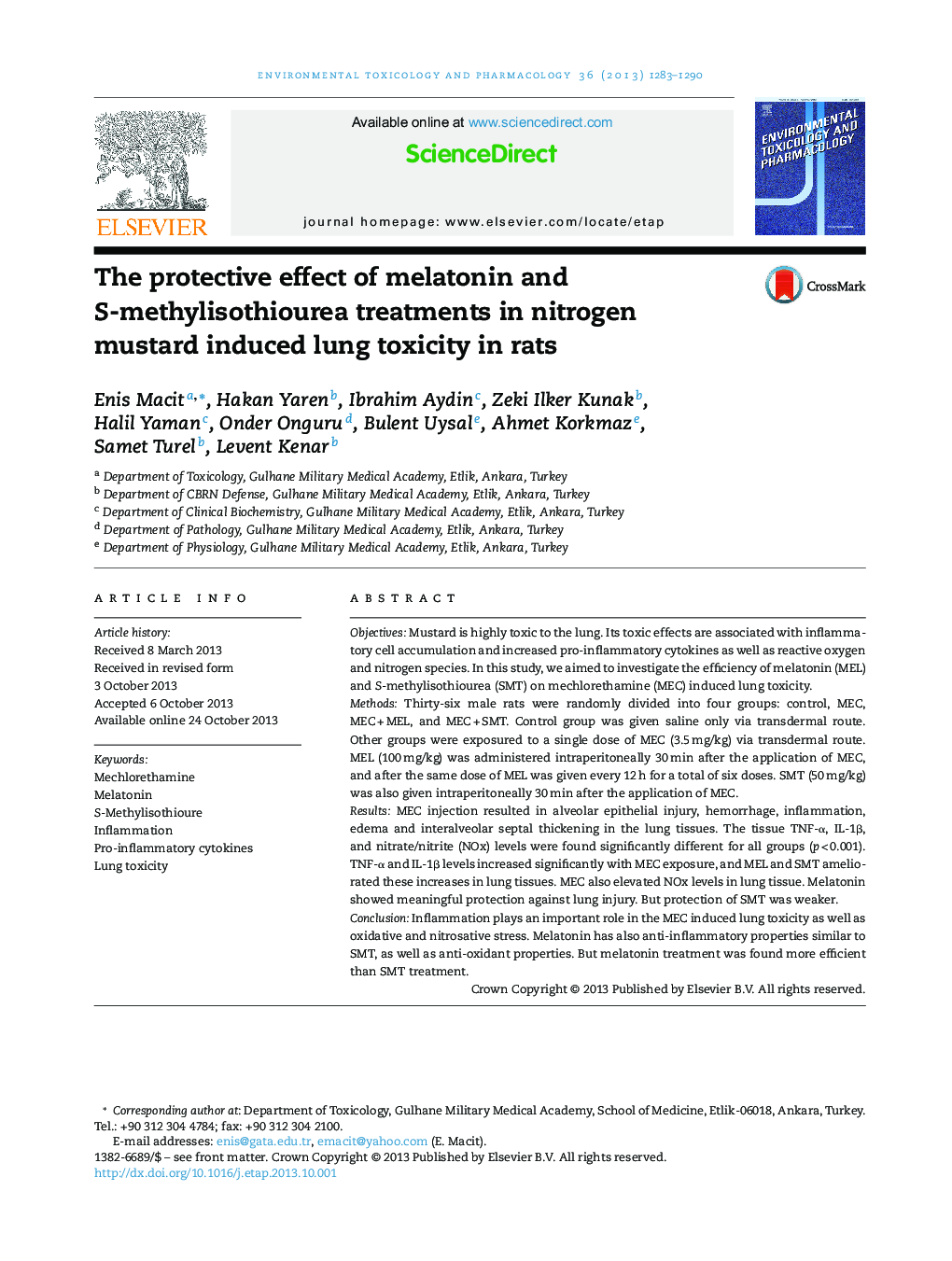| کد مقاله | کد نشریه | سال انتشار | مقاله انگلیسی | نسخه تمام متن |
|---|---|---|---|---|
| 2583124 | 1130679 | 2013 | 8 صفحه PDF | دانلود رایگان |

• Nitrogen mustard is potent vesicant, bifunctional alkylating agent.
• Mechanisms of mustard toxicity include DNA alkylation, glutathione depletion, and other pro-inflammatory cytokines.
• Antioxidant therapy is significantly promising in inflammation modulation.
• The exposure to nitrogen mustard is associated with inflammatory and oxidative injury in the lungs.
• Melatonin combined with specific iNOS inhibitors (e.g. SMT, aminoguanidine) could be a potential therapeutic treatment against mustard induced lung toxicity.
ObjectivesMustard is highly toxic to the lung. Its toxic effects are associated with inflammatory cell accumulation and increased pro-inflammatory cytokines as well as reactive oxygen and nitrogen species. In this study, we aimed to investigate the efficiency of melatonin (MEL) and S-methylisothiourea (SMT) on mechlorethamine (MEC) induced lung toxicity.MethodsThirty-six male rats were randomly divided into four groups: control, MEC, MEC + MEL, and MEC + SMT. Control group was given saline only via transdermal route. Other groups were exposured to a single dose of MEC (3.5 mg/kg) via transdermal route. MEL (100 mg/kg) was administered intraperitoneally 30 min after the application of MEC, and after the same dose of MEL was given every 12 h for a total of six doses. SMT (50 mg/kg) was also given intraperitoneally 30 min after the application of MEC.ResultsMEC injection resulted in alveolar epithelial injury, hemorrhage, inflammation, edema and interalveolar septal thickening in the lung tissues. The tissue TNF-α, IL-1β, and nitrate/nitrite (NOx) levels were found significantly different for all groups (p < 0.001). TNF-α and IL-1β levels increased significantly with MEC exposure, and MEL and SMT ameliorated these increases in lung tissues. MEC also elevated NOx levels in lung tissue. Melatonin showed meaningful protection against lung injury. But protection of SMT was weaker.ConclusionInflammation plays an important role in the MEC induced lung toxicity as well as oxidative and nitrosative stress. Melatonin has also anti-inflammatory properties similar to SMT, as well as anti-oxidant properties. But melatonin treatment was found more efficient than SMT treatment.
Journal: Environmental Toxicology and Pharmacology - Volume 36, Issue 3, November 2013, Pages 1283–1290